A controversial museum featuring a poo machine and the chocolate-coated entrails of a suicide bomber, has bolstered tourism in Tasmania.
HOBART, Australia—
Standing outside Hobart’s Museum of Old and New Art (MONA) the first thing that hits you is the smell of manure.
It’s a biting cold day when we disembark from the MONA ferry, push past the crush of tourists, and walk up the imposing steps emerging into, unexpectedly, a tennis court. Straight ahead is a metallic, boxy building that emits a faint fecal order. I enter thinking it is the toilet (perhaps with a sewage leak?) only to find the ticket counter.
Visiting MONA is like peering through the looking glass. Deep down in the museum’s cavernous underbelly—inside that mirrored box building—sits Wim Delvoye’s cloaca machine, otherwise known as “the shit machine.” The Belgium artist’s vast array of whirring tubes and bags mimic the workings of the human digestive system. The apparatus is fed food and produces excrement. Isn’t modern art, Delvoye seems to say, just a load of crap?
The machine is MONA’s most hated piece. But it is also the one visitors spend the most time taking in. It is, at once, magnificent and repulsive. And that is exactly how David Walsh, multimillionaire, professional gambler, and MONA’s founder, likes it.

“An Australian might describe [MONA] as dodgy or tongue-in-cheek,” the 53-year-old maverick tells me with a grin. He is sitting backstage, with spiky gray hair and gray stubble on his chin, sporting jeans and a blue velvet jacket. Views stretch over the river and plants hang in artsy plastic sculptural bags from the ceiling. (They remind me of blood transfusion sacks.)
Walsh—a mathematical whiz kid—made his fortune on blackjack and at the racetrack as part of the world’s largest gambling syndicate, Bank Roll. In 2011, he opened MONA in his hometown of Hobart, Tasmania, investing, it is rumored, more than $200 million in the macabre museum.
Dedicated to sex and death, pieces include Stephen Shanabrook’s “On the Road to Heaven the Highway to Hell,” which features the entrails of an 18-year-old suicide bomber cast in dark chocolate. The museum is also home to 151 porcelain vulvas sculpted from real women. Hated by some, loved by others, MONA has put Tasmania on the map, single-handedly bumping up international tourism in the sleepy Australian state.

Hobart, Australia’s second oldest city after Sydney, was founded in 1804 as a penal colony. Van Diemen’s Land, as Tasmania was then known, was attractive for its rich agricultural soil, sweeping beaches, snow-capped mountains, and swathes of untouched wilderness populated by the Tasmanian tiger (since hunted to extinction). The island economy was erected on convict labor, shipbuilding, and whaling. In more recent times it has became a hub for Antarctic research.
Today, however, Tasmania is Australia’s poorest-performing state. More than one-third of Tasmanian households derived their primary income from government payouts according to the 2011 census. Speak to locals and they talk with trepidation and some sadness about the Australian “mainland,” where many of their best and brightest emigrate.
Tasmania has among Australia’s highest number of teenage pregnancies, worst domestic violence figures, greatest obesity endemics, and lowest employment rates. In 2013 the Australian website Crikey published an article titled “What’s wrong with Tasmania, Australia’s freeloading state?” “It seems not to matter which measure is chosen,” the writer sniffed, “Tasmania will likely finish last.”
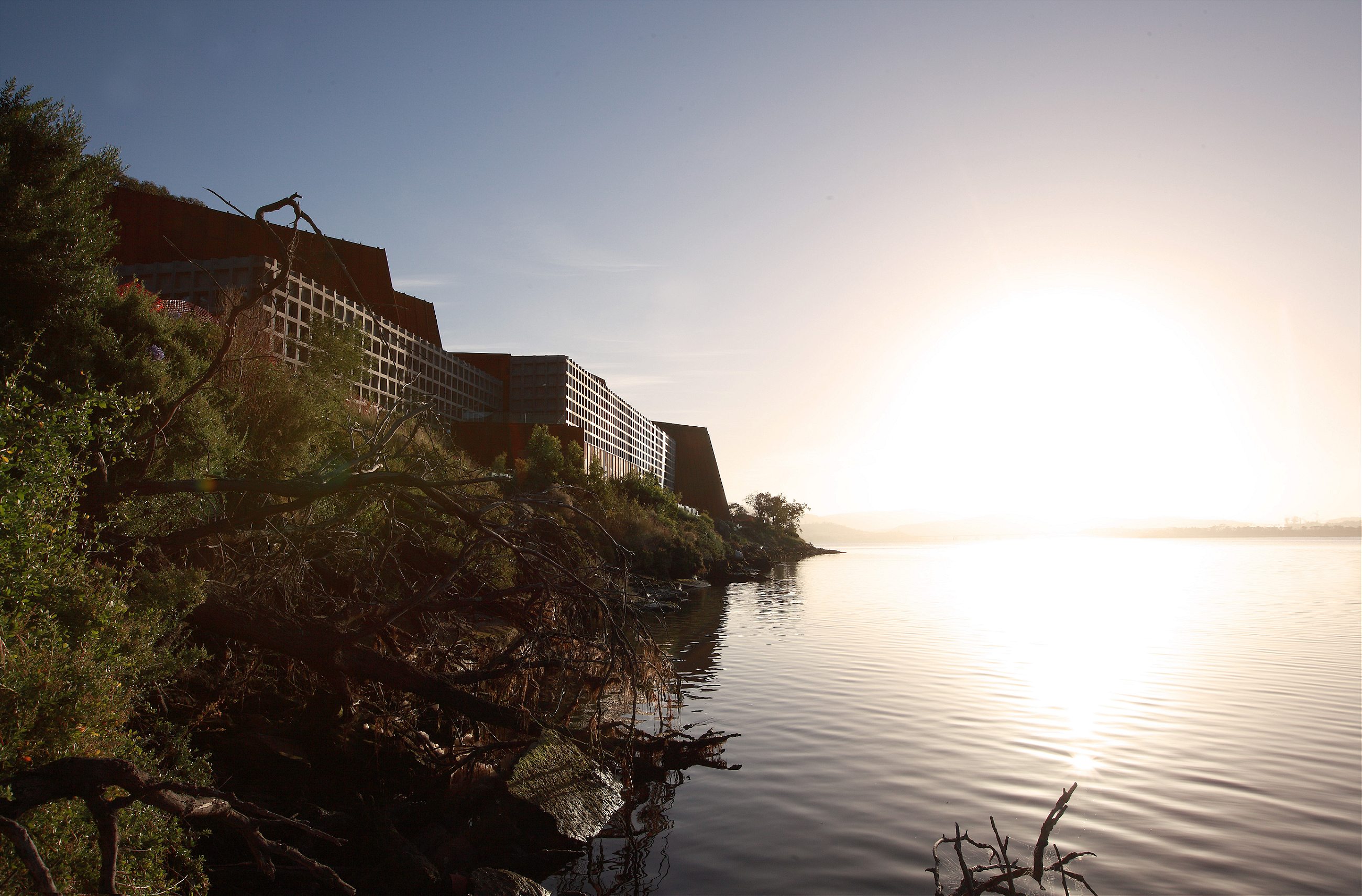
In one race, however, Tasmania is winning: tourism. In 2013 Lonely Planet named Hobart—this windswept gateway to the Antarctic with a population of 214,000—as one of its top-10 destinations worldwide. It has long attracted an “outdoorsy” set, but now tourists are also drawn by the burgeoning gastronomic scene and injection of cultural zing. MONA, wrote Lonely Planet, has “Hobart rousing from its slumber.”
“There’s been decades and decades of tension,” says Jonah Poole, a chirpy 37-year-old guide. “A lot of people told us tourism is never going to save Tasmania, whereas [MONA’s] really shown how it can succeed. It’s given businesses and artists a big kick-start. We all know that’s our lifeline, really—without tourism we are in a lot of trouble.”
Walsh, however, wasn’t concerned with raising Hobart’s luck when he erected his monolithic underground museum. It was more a wacky vision, an indulgence, and, he has claimed, a way to assuage guilt for making money without creating anything. “One of the things I said is that if nobody comes, I’ll get a big armchair and turn off the air conditioning and watch the art rot,” he remembers.
“So when people came, and particularly when they were Tasmanians, and when they started taking ownership of the museum, in other words calling it ‘our’ museum …” he pauses. “This thing completely surprised me, floored me, and perhaps part of the surprise was that it brought a tear to my eye—that I cared about it.”

Last year 330,000 people visited the museum—more than 25 percent of all tourists in the state. Tourism Industry Council Tasmania has estimated that the museum adds more than $100 million annually to Tasmania’s economy, one that previously relied on faltering industries such as forestry.
Shortly after the opening Walsh was hit up for a multimillion dollar tax bill (it has since been settled), much to the irritation of locals, who are by and large grateful that he chose to build his museum here. “How can you go after someone who has done so much?” demands local winemaker and lawyer Bernadette Ulbrich-Hooper at the bustling Salamanca Market, a collection of hundreds of food, clothes, and knick-knack stalls held every Saturday in Hobart’s historic old town. “Thank you for keeping the money here and the museum here. A lot of people would have taken it elsewhere.”
So why did Walsh choose to build MONA in this isolated town located on an island at the end of the world? “Because I had the bloody land!” he asserts. Then he mellows, adding: “If this was New York we’d probably get a lot more visitors but have a lot less impact. So it would be drowned out by what I once described as the scream of cultural bland.
“There is so much going on [in New York] that no one would notice that this was interesting. It’s like eating chocolate after you eat a jelly bean.” He laughs. “Hey I like that!”

The media often accuses Walsh of churlish bad manners. The socially awkward millionaire suspects he has Asperger’s. He remained uncommitted to speaking to me until the day before our interview. (His publicist, only half-joking, threatens to “slit my ankles” should he not show up.) But on the Sunday we speak he is humble and funny and very smart, careering through different conversations with speed. Only his abrupt hello and goodbye, when he looks to the ceiling rather than making eye contact, hints at any condition.
Walsh was brought up in Hobart’s roughest working-class suburb of Glenorchy, just a few miles from MONA. His mother, a cleaner, was a devout Roman Catholic, and his father worked stints as a waiter, barman, and asylum orderly. (The pair separated when he was 2 years old.) People who know Walsh in Hobart tell me that MONA has given someone who was cripplingly shy with little confidence a platform and a voice.
Raised religious, Walsh is now a fervent atheist. MONA is a temple of secularity that makes the profane transcendent and the earth-bound divine. For $75,000, the museum offers an “eternity membership” where clients nearing the end can sign up to be cremated and then have their ashes displayed. So far only Walsh’s late father and his 12-year-old nephew (who hung himself on a swing in a likely suicide) have their urns exhibited. Both are wedged in a corridor, displayed in a black-lacquered timber-and-glass cabinet, fringed by gothic velvet curtains and a swooping stuffed crow.
“Can we introduce or induce this meaningfulness, this spirituality without the spirit?” he asks. “Well, I don’t know. [But] I like the idea of your family turning up and having a glass of chardonnay and saying, ‘Well, he was a nice guy.’ And after three: ‘He was a bit of a bastard.’”
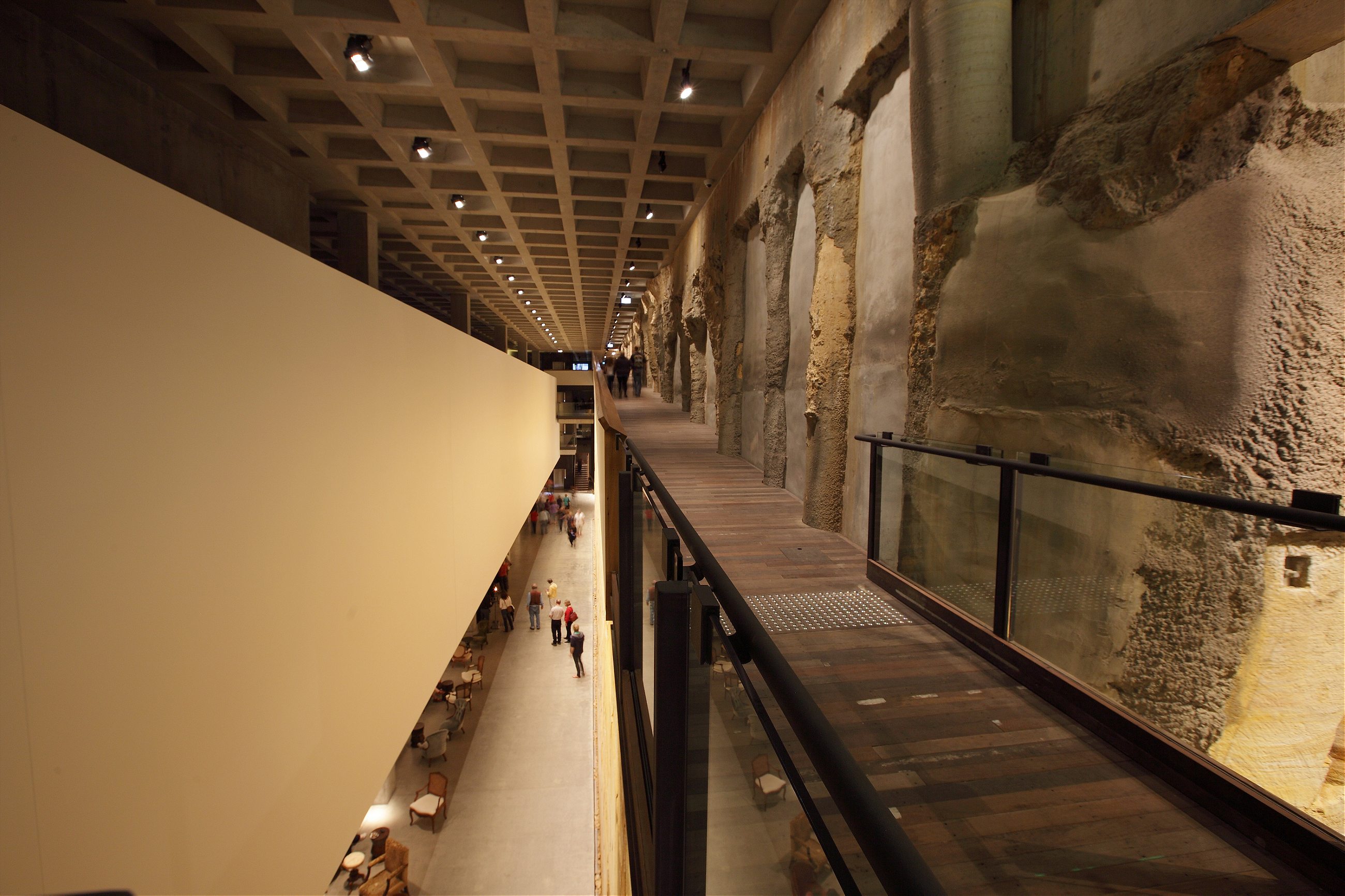
MONA asks its visitors to doubt. It raises questions rather than answering them and it relishes residing in a state of the unsettled, the unresolved, and the unsure. This, argues Walsh, creates freedom. As does art that gains its value in the shock of the unthinkable rather than the beautiful. It is certainly different from most museums whose aims are to foster the twin pillars of education and enlightenment.
Locals approach him daily to talk, a situation that causes Walsh much distress. “Had I imagined that happening, had I suspected, I would have thought: I can’t live like that,” he says, shaking his head. “I can’t have people talking to me in the street. I could have conceivably not done [the museum] at all or done it elsewhere where it wouldn’t matter.”
While Walsh offers elite luxury tour packages for outside visitors (some of whom stay in pricey accommodation on site and eat in the stuffy haute-cuisine restaurant), entrance is free for Tasmanians. Poole, the tour guide, recalls once seeing Walsh’s Ferrari parked outside the DVD store. I ask how he knows it was Walsh’s car. He looks at me surprised: “There’s only one Ferrari in town.”
“Why buy a red Ferrari? It’s the stupidest thing in the world!” Walsh says when asked. But this is a man who sees life as an extension of sex. He claims he built MONA to “get the chicks”;” he once ate dessert from a mold created from the vulva of an ex-girlfriend; and in his new memoir, A Bone of Fact, he talks with bravado—some say sexism—about the women he’s bedded. The Ferrari, then, “indicates a power, a capacity to show off. In other words I can look after you. Because I’ve built this huge museum and it means I must have something somewhere—it’s not going to disappear next Tuesday.”
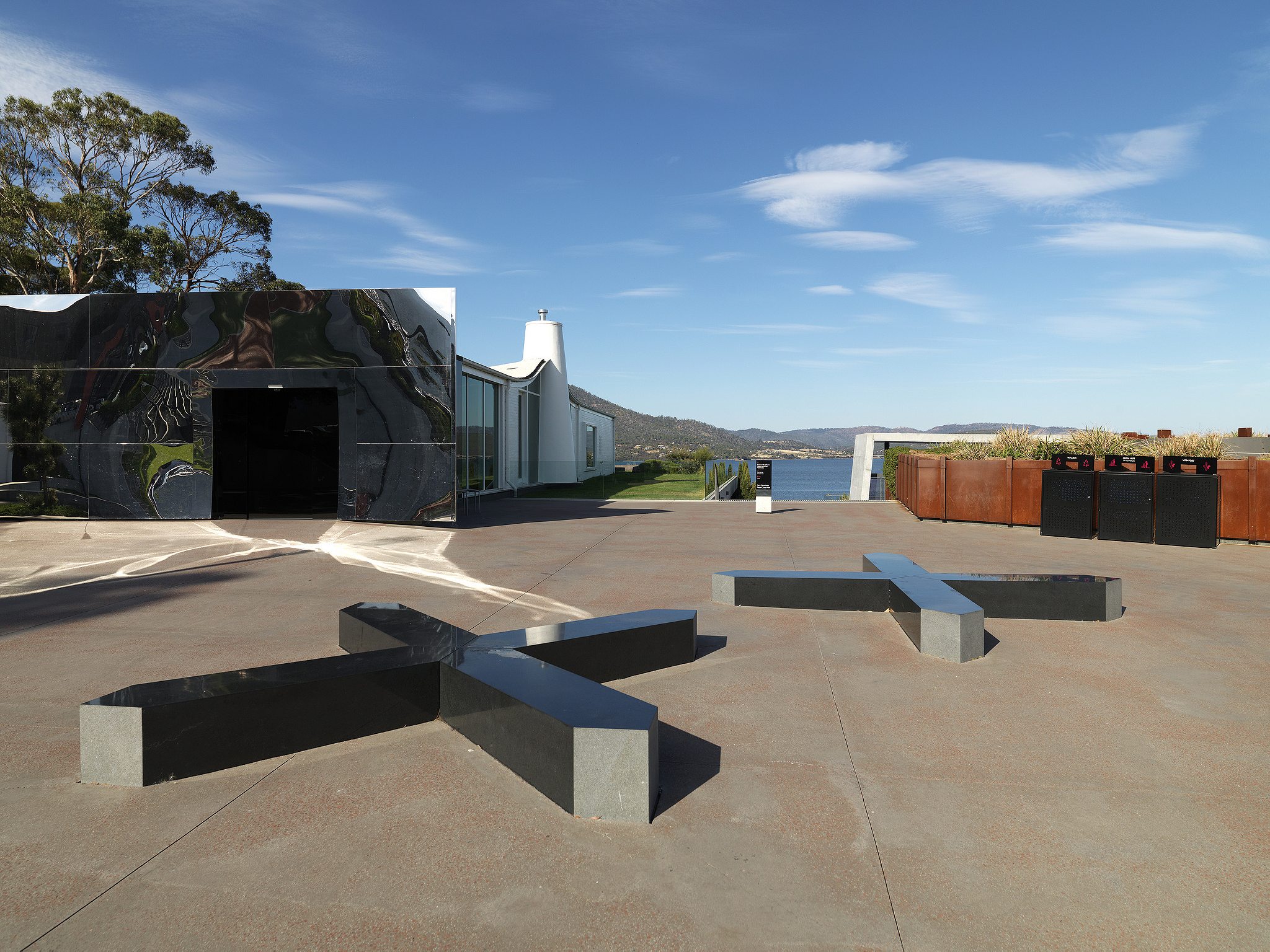
Never one to let an opportunity slide, Walsh plays with his newfound fame. His number plate for one of his cars reads GODXXX, and his parking spaces are reserved with the signs “GOD” and “GOD’S MISTRESS.”
God’s mistress, Walsh’s new 37-year-old pregnant wife, the American artist Kirsha Kaechele, lives with him above the museum. (He also has two other daughters from two different mothers.) A secret door leads from the darkened “Death Room,” a hushed watery crypt that contains the remains of a Roman mummy, to his house. Stand at a certain corner of the Sidney Nolan “Snake” gallery and look directly up, and you can see Walsh’s living-room furniture through six glass panels. Often, he tells me, he stares down, both all seeing and unseen, at his patrons below.
In Hobart’s pretty harbor, fishermen unload their catches and cruise ships offload their holidaymakers. This was once the land of the downbeat, the modest, and the unaffected. But walk around now, and there is a new spirit in town.
MONA is everywhere. Sexy MONA ferries skid along the water and florid pink and black MONA buses with tinted windows whizz around the city. “They’re the mafia of Hobart,” one Melbourne visitor told me. “The mayor [doesn’t run Hobart]. The real person who owns this city is the billionaire with the art museum.”
At times this can be overwhelming, but it has also made the locals proud. Dressed in a tiara and red sash, bride-to-be Sophia Conley, 29, sips cocktails with a gaggle of girls at the MONA bar on her hen party. At high school she remembers being embarrassed to live in Hobart, but now “I’m proud to live in Tassie. MONA’s weird and gross but I love it.”
“It’s given us [Tasmanians] some credibility,” says Ulbrich-Hooper. “It’s a pity we needed that. People had this image we had two heads. It was always the wilderness that was the draw card whereas now it’s class and sophistication. We are not a hick town anymore.”
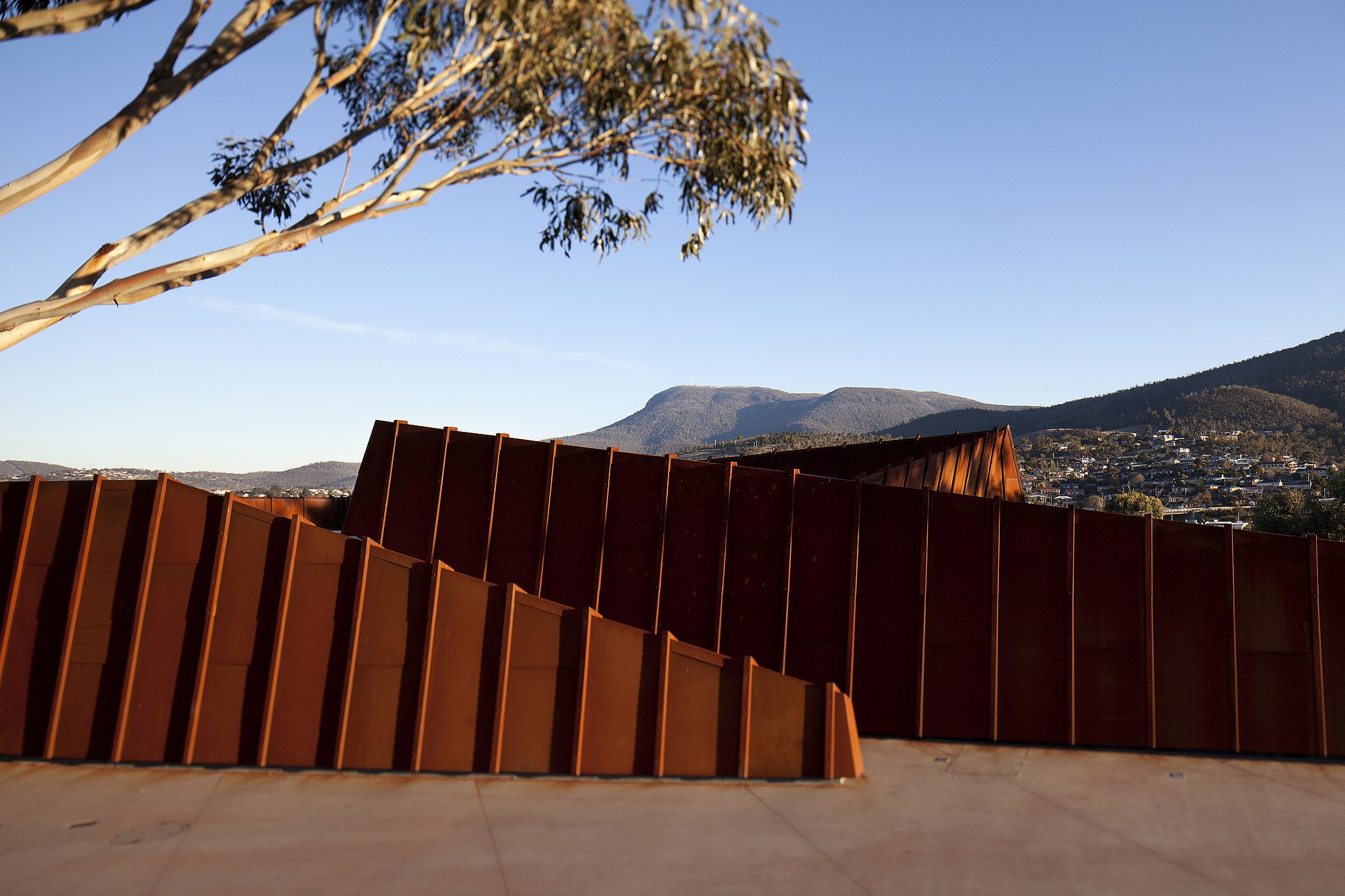
Hicks, no. Hipsters, yes. MOFO, MONA’s summer festival, draws a self-knowing crowd, many in patchwork pants with sculptured moustaches or messy hair piled high on their heads, to its alternative gigs. The day I visit, the Chinese artist Li Binyuan is smashing 250 hammers. With a hammer. Watching him is 56-year-old local Merv Hut, resting on his mop as he takes a break from his cleaning job.
To Hut, a former construction worker at the nearby Cadbury’s factory, this might all seem a bit silly. But he loves it. He loves that the crowds have come, that he has a job for the week, and that “Walsh is a man with a vision who can see a future.” He turns his attention back to the performance piece. “Look at the people standing around watching him smash hammers! I want to know how he is going to smash the last one—on his head or something …”
That MONA is a private museum that bows down to its owner, unabashed, unapologetic, and unburdened by bureaucracy and public money, keeps it fresh. It keeps the crowds coming. What’s more, Walsh believes that his private museum—Australia’s largest—fills a space left by bad federal politics.
“Patronage emerges in cultures that don’t have political safety nets,” he says. “So the social state has now been dismantled in Australia under [Prime Minister Tony] Abbot and other economic rationalist regimes that we’ve recently had. And that seems to be the generator. If the [government] isn’t doing anything then individuals will do it. It’s an outcome of the slash and burn mentality.”
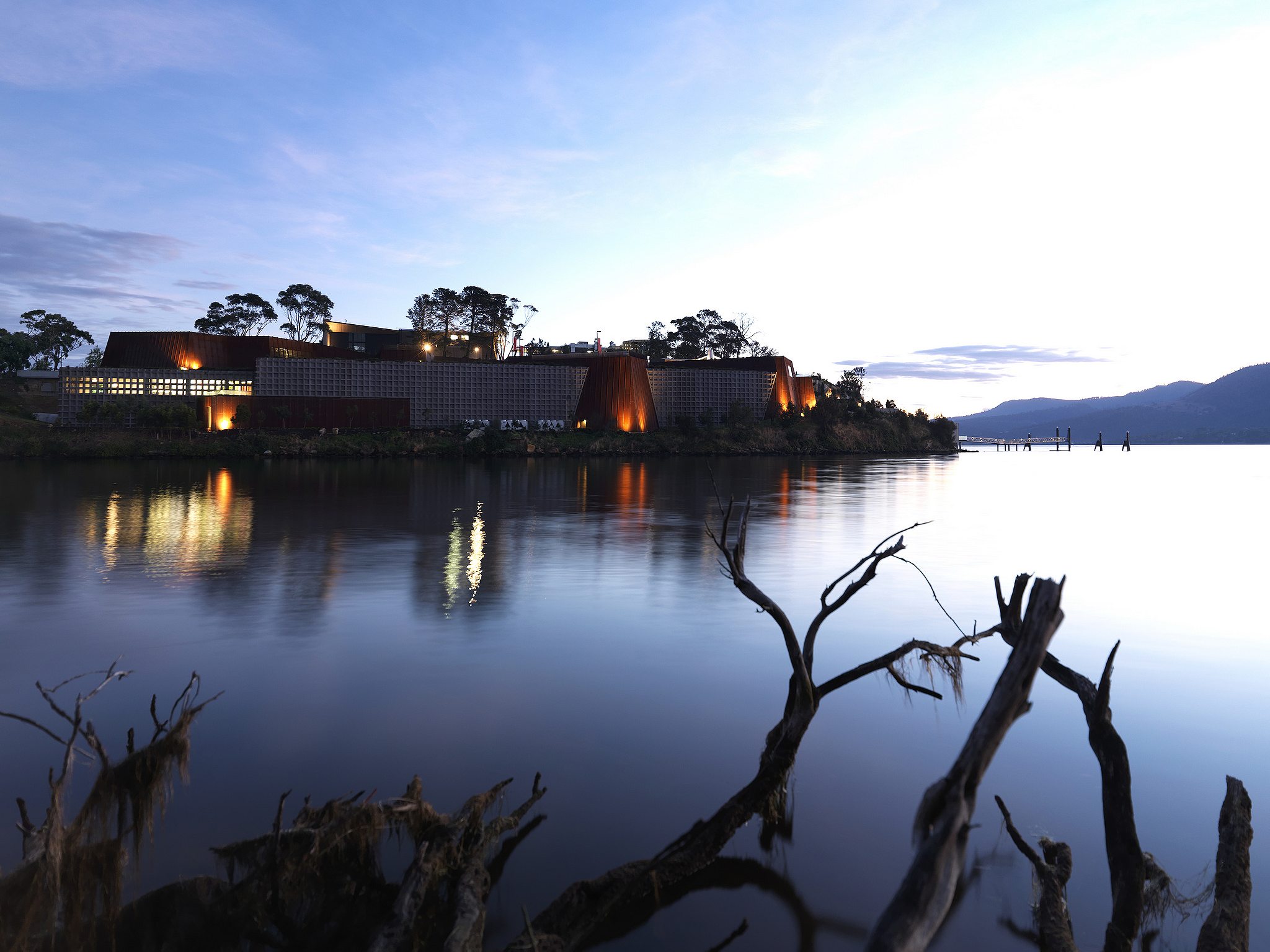
MONA, however, cannot remain the way it is forever. It takes in roughly $4 million a year, but it costs up to $12 million to run—and there, in the gap, is Walsh. Should he become bored or run out of money, MONA’s luck—and with it Hobart’s—might also run out.
Walsh is aware that he should seek tax-free status and set up a board. For the moment, however, he is loath to lose control. (“When I get a board, they’ll sack me!”) He has announced plans to open a small high-end casino to bring in extra cash and hopes that A Bone of Fact will make some more dough.
So what scares him the most? Walsh thinks for an uncomfortably long time. “That if my desire to preserve MONA’s audience drives it to become lame, bland. There is no doubt that I’ve become part of the establishment while sticking it up the establishment,” he says. “To not be able to play the game doesn’t scare me, but to play it badly … that scares me.”
